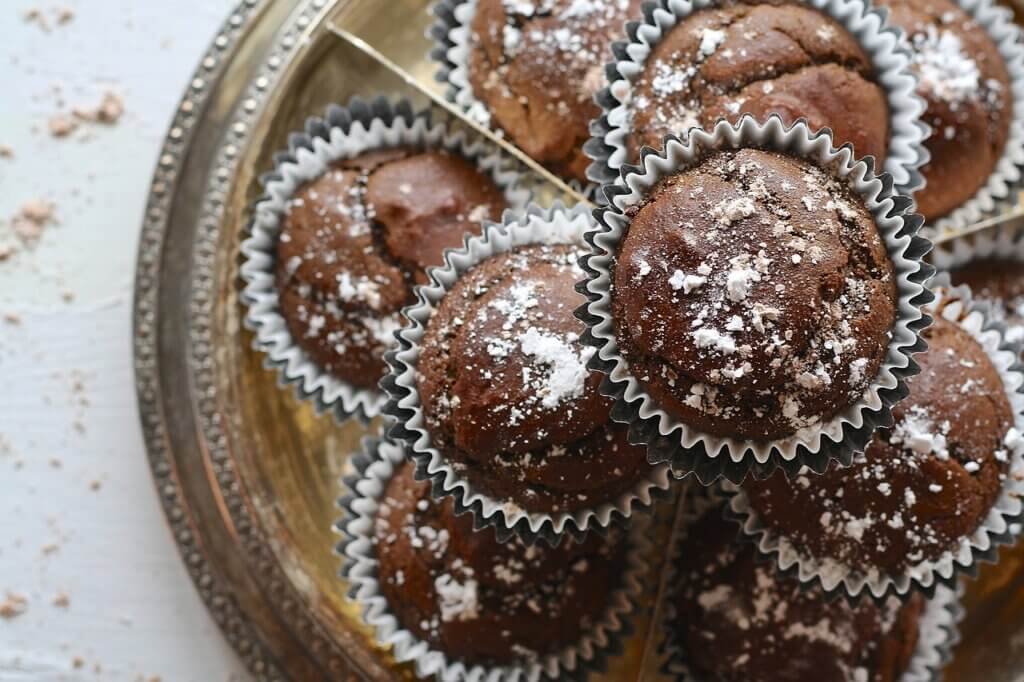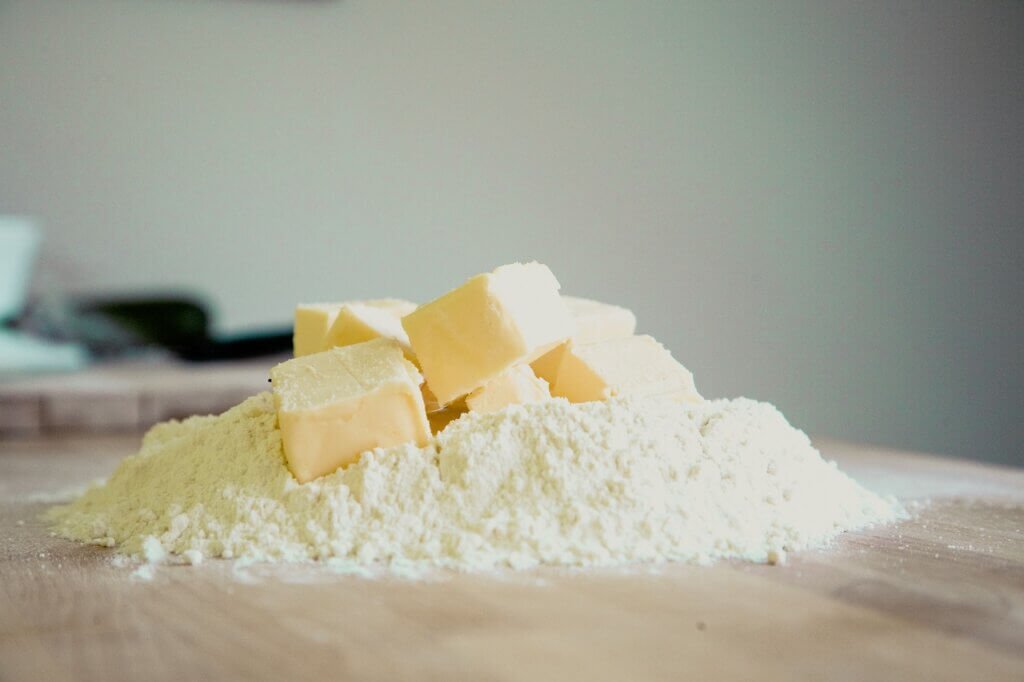Have you ever wondered why some cakes turn out light and fluffy, while others are dense and heavy? Well, it all comes down to the science of baking and understanding the role of leavening agents and ratios. In this article, we will explore the fascinating world of baking and uncover the secrets behind achieving the perfect rise in your baked goods. Get ready to become a baking expert as we dive into the science behind leavening agents and ratios that will transform your baking results!

Leavening Agents
Baking is both an art and a science, and understanding the role of leavening agents is essential in achieving baking success. Leavening agents are ingredients that help dough and batter rise by creating air bubbles, resulting in a light and fluffy texture. There are three main types of leavening agents: chemical, biological, and natural. Each of these categories plays a unique role in the baking process and can be used to create delicious treats.
Chemical Leavening Agents
Chemical leavening agents are probably the most commonly used types of leavening agents in baking. They work by releasing carbon dioxide gas, which causes the dough or batter to expand. Two examples of chemical leavening agents are baking powder and baking soda.
Baking Powder
Baking powder is a mixture of an acid and a base, usually cream of tartar and baking soda. When combined with a liquid, baking powder produces carbon dioxide gas, which causes the dough or batter to rise. Unlike baking soda, baking powder does not require any additional acid in the recipe to activate its leavening properties. It is already pre-mixed and ready to use, making it a convenient choice for many bakers.
Baking Soda
Baking soda, also known as sodium bicarbonate, is an alkaline compound that reacts with acids to produce carbon dioxide gas. It is often used in recipes that contain acidic ingredients, such as buttermilk, yogurt, or citrus juices. When baking soda is combined with an acid, it creates bubbles that help the dough or batter rise. However, it is important to note that baking soda requires the presence of acid in the recipe to activate its leavening properties.
Biological Leavening Agents
Biological leavening agents, as the name suggests, rely on living organisms to create carbon dioxide gas and leaven the dough or batter. The most common biological leavening agent used in baking is yeast.
Yeast
Yeast is a type of fungi that consumes sugars and releases carbon dioxide as a byproduct. This gas gets trapped in the dough or batter, causing it to rise. Yeast needs time to work and is often used in recipes that require proofing or allowing the dough to rise before baking. It adds a distinct flavor and aroma to baked goods, making it a favorite choice for bread and other yeast-based recipes.
Natural Leavening Agents
Natural leavening agents are ingredients that can help dough and batter rise without the need for additional chemicals or organisms. Two common natural leavening agents are eggs and air.
Egg
Eggs can act as natural leavening agents in certain recipes, particularly ones that rely on the whipped egg whites. When the egg whites are beaten, they incorporate air into the mixture, which creates volume and lightness. This technique is commonly used in soufflés, meringues, and sponge cakes. The air trapped inside the beaten egg whites expands when exposed to heat, aiding in the leavening process.
Air
Believe it or not, air can also act as a natural leavening agent. When you combine ingredients and mix them vigorously, you introduce air into the mixture. This trapped air expands when exposed to heat, causing the dough or batter to rise slightly. While air alone is not a powerful leavening agent, it does contribute to the overall texture and volume of baked goods.

Understanding Leavening Ratios
Now that you have a good understanding of different leavening agents, it’s important to know how to use them effectively by understanding leavening ratios. Leavening ratios refer to the correct balance of leavening agents to other ingredients in a recipe.
The Importance of Ratios
Getting the leavening ratios right is crucial in baking. Too much or too little leavening agent can significantly affect the final outcome of your baked goods. Too much leavening can cause the dough or batter to rise too quickly and then collapse, resulting in a dense and deflated finished product. On the other hand, too little leavening may lead to a flat and dense texture, lacking the desired lightness and fluffiness.
Baking Powder Ratios
When using baking powder as the leavening agent, it is important to follow the recommended ratios for optimal results. The general rule of thumb is to use 1 to 2 teaspoons of baking powder per cup of flour. This ratio may vary depending on the desired texture and rise of the baked goods. It’s always a good idea to consult a trusted recipe or baking guide for specific measurements.
Yeast Ratios
When working with yeast as the leavening agent, the ratios are slightly different. Yeast requires time to work its magic, so it’s essential to give it adequate time to ferment and produce the desired rise. Typically, one packet or 2 ¼ teaspoons of active dry yeast is sufficient for 3 to 4 cups of flour. For a stronger rise, you can increase the amount of yeast slightly, but be cautious not to overdo it.
The Importance of Ratios
Finding the right balance between wet and dry ingredients is crucial in achieving the desired texture and volume in your baked goods. The amount of leavening agent used will depend on the ratios of other ingredients, particularly the liquids and fats.
Balancing Wet and Dry Ingredients
Maintaining the proper balance between wet and dry ingredients is vital in achieving the perfect texture. Too much liquid can result in a heavier and denser baked good, while too little liquid can yield a dry and crumbly texture. The ratio of flour to liquid, along with the appropriate amounts of leavening agents, helps to strike the right balance and create a tender and moist finished product.
Creating Proper Texture and Volume
The right ratios of leavening agents can also impact the overall texture and volume of your baked goods. The correct amount of leavening agent can help the dough or batter rise evenly, producing a light and airy texture. Additionally, it contributes to the final volume and height of the baked goods. Achieving the desired rise and texture is a delicate balance, so it’s essential to follow recommended ratios and measurements closely.

Baking Powder Ratios
Baking powder is a versatile leavening agent used in various recipes, and understanding the different types and ratios is essential for baking success.
Single-Acting Baking Powder
Single-acting baking powder is a type of baking powder that reacts with moisture immediately upon mixing with other ingredients. It contains both the acid and the base required for leavening in one chemical compound. When combined with liquid, single-acting baking powder releases carbon dioxide gas instantaneously. To achieve the desired rise, it is crucial to bake the batter or dough immediately after mixing. The ratio for single-acting baking powder is typically around 1 to 1.5 teaspoons per cup of flour.
Double-Acting Baking Powder
Double-acting baking powder, as the name suggests, reacts twice during the baking process. It contains both fast-acting and slow-acting components. The first reaction occurs when the baking powder is mixed with liquid, and the second occurs when it is exposed to heat during baking. This double reaction provides a more extended rise and a better texture. The ratio for double-acting baking powder is usually around 1 to 2 teaspoons per cup of flour. It provides a more reliable rise and is commonly used in a wide range of recipes.
Yeast Ratios
Yeast is a living organism that requires specific conditions and ratios to unleash its full leavening potential.
Active Dry Yeast
Active dry yeast is the most commonly used type of yeast in baking. It needs to be hydrated and activated before use. The general ratio for active dry yeast is around ¼ to 1 teaspoon per cup of flour, depending on the desired rise and fermentation time. Active dry yeast requires proofing, which involves dissolving it in warm water or milk with a small amount of sugar. This process allows the yeast to activate and start consuming the available sugars, producing carbon dioxide gas.
Instant Yeast
Instant yeast is a type of yeast that does not require proofing or activation. It can be added directly to the dry ingredients, making it more convenient for bakers. The ratio for instant yeast is similar to active dry yeast, usually around ¼ to 1 teaspoon per cup of flour. Instant yeast is more potent than active dry yeast, so a smaller amount is needed to achieve the same rise. It is a great choice for those who want to skip the proofing step and save some time in the baking process.

Adjusting Leavening Agents and Ratios
While it is important to follow recommended leavening agent and ratio guidelines, there are instances where adjustments may be necessary.
Making Substitutions
In some cases, you may need to make substitutions for leavening agents due to dietary restrictions or personal preferences. For example, if a recipe calls for baking soda, but you don’t have any on hand, you can substitute it with baking powder. However, it is important to keep in mind that baking powder is not as strong as baking soda, so you may need to adjust the quantities accordingly. Additionally, if you are looking to make a recipe vegan, you can replace eggs with alternative ingredients such as flax eggs or applesauce, which also offer some leavening properties.
Making Adjustments for Altitude
Altitude can affect the performance of leavening agents in baking. As altitude increases, atmospheric pressure decreases, which can lead to a more significant rise in the dough or batter. To compensate for this, you may need to reduce the amount of leavening agent used, specifically baking powder. The general rule of thumb is to decrease the amount by around 1/8 to 1/4 teaspoon per teaspoon called for in the recipe. It may require a bit of experimentation to determine the exact adjustment needed, but keeping track of your results can help you find the perfect ratio for your specific altitude.
Adapting to Different Recipes
Different recipes may call for different leavening agent ratios, depending on the desired outcome and the type of baked goods being made. It is essential to read the recipe carefully and follow the recommended measurements to achieve the best results. Some recipes may require more or less leavening agent to create the desired rise and texture. Experimentation and practice are key to understanding how different ratios impact the final outcome of your baked goods.
In conclusion, understanding leavening agents and ratios is crucial in achieving baking success. Chemical, biological, and natural leavening agents each play a unique role in the baking process, and their ratios must be carefully balanced to achieve the desired texture and volume. Whether you’re using baking powder, yeast, eggs, or air, following the recommended ratios and understanding how they interact with other ingredients will help you create delicious treats every time. So, don your apron, gather your ingredients, and let the science of baking guide you on a delightful culinary journey!


